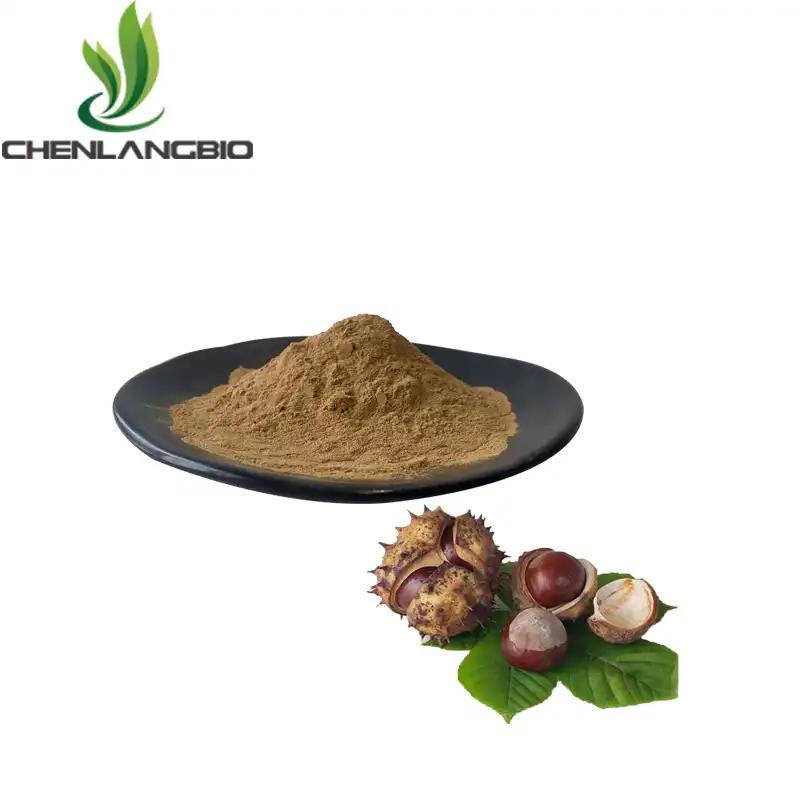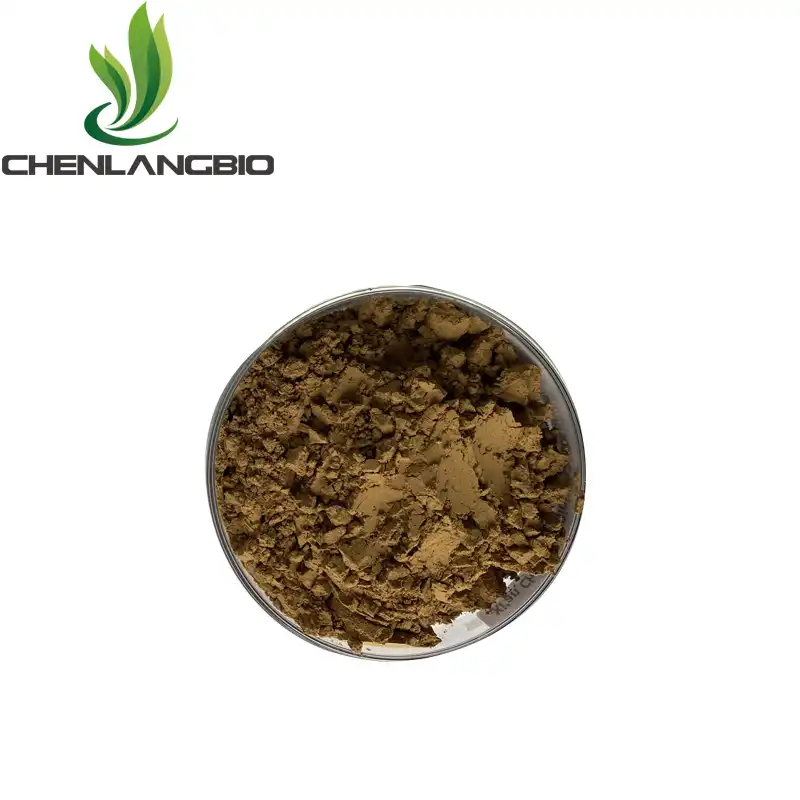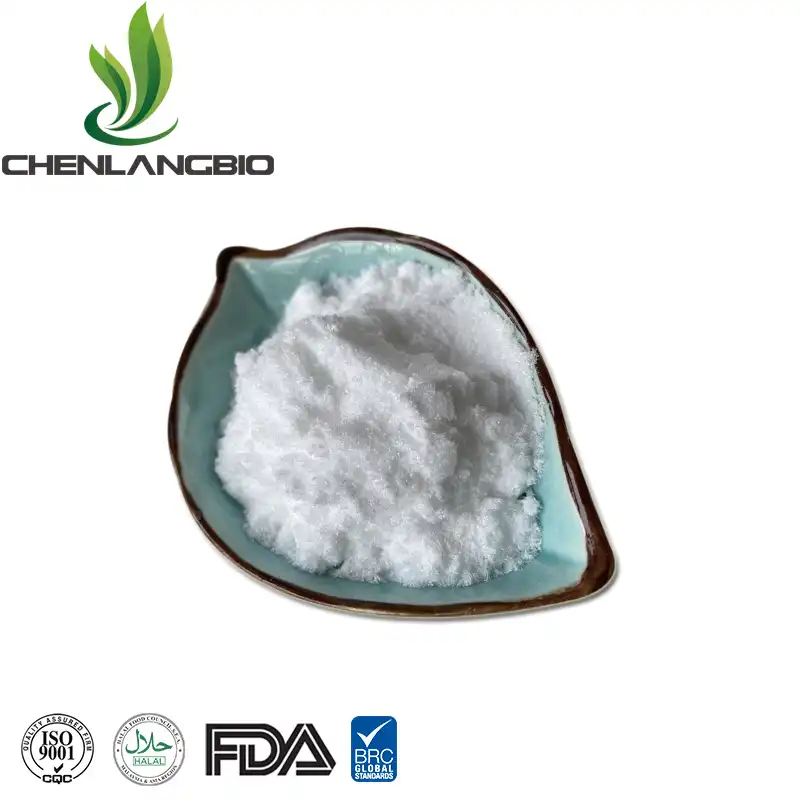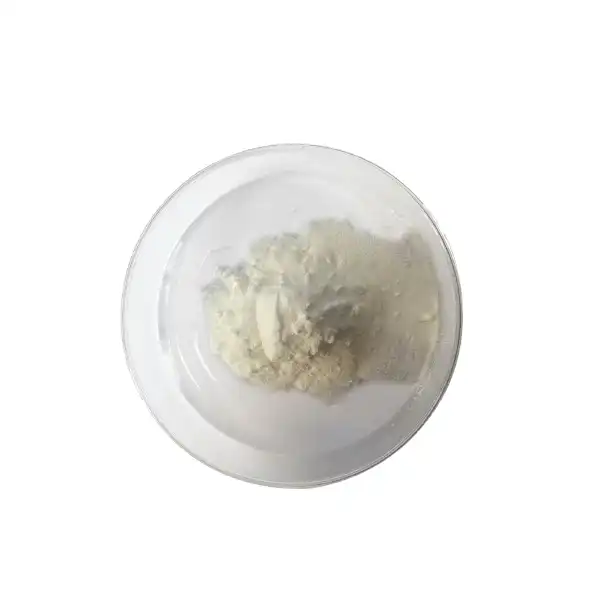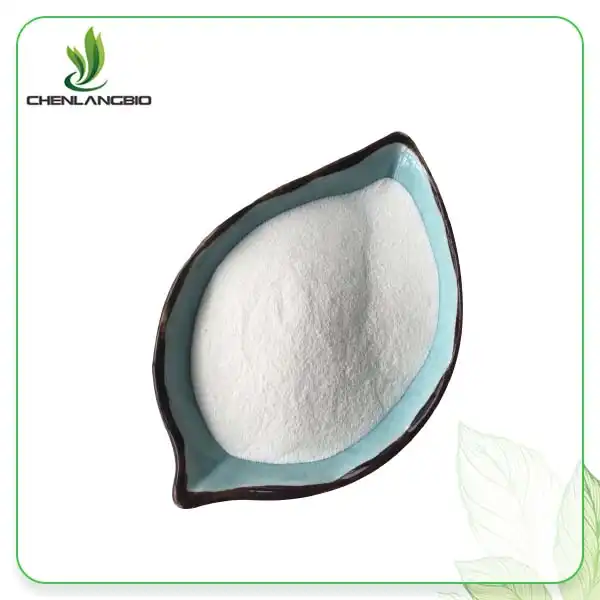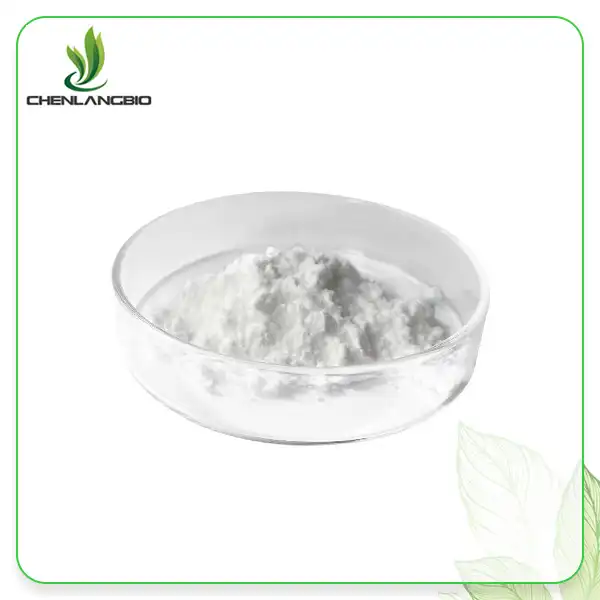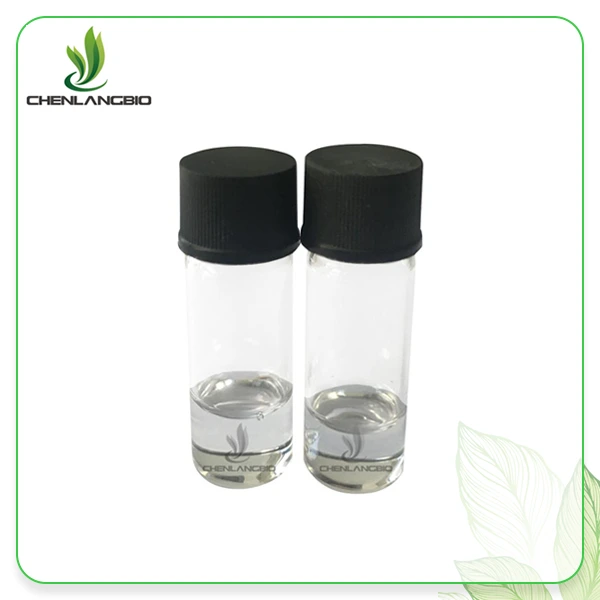Paeoniflorin 80%: Health Benefits and Uses in 2024
2024-11-08 08:42:00
Paeoniflorin, a bioactive compound derived from the peony plant, has been gaining significant attention in the health and wellness community. The interest in natural remedies and supplements continues to grow, with paeoniflorin emerging as a promising option for various health concerns. This article delves into the world of paeoniflorin, exploring paeoniflorin 80% mechanisms, potential benefits, and optimal usage for those seeking to enhance their well-being naturally.
What Is Paeoniflorin and How Does It Work?
Paeoniflorin is a monoterpene glycoside extracted primarily from the roots of Paeonia lactiflora, commonly known as the Chinese peony. This compound has been a staple in traditional Chinese medicine for centuries, valued for its diverse therapeutic properties. In recent years, scientific research has begun to unravel the mechanisms behind paeoniflorin's effects on human health.
At its core, paeoniflorin works by modulating various biochemical pathways in the body. It exhibits potent anti-inflammatory, antioxidant, and immunomodulatory properties. These actions are attributed to its ability to influence key cellular signaling molecules, such as nuclear factor-kappa B (NF-κB) and mitogen-activated protein kinases (MAPKs).
The compound's molecular structure allows it to interact with multiple targets in the body, affecting processes like:
- Inflammation reduction
- Oxidative stress mitigation
- Neurotransmitter regulation
- Blood flow improvement
- Cellular protection
Paeoniflorin's versatility in addressing various physiological processes makes it a compound of interest for researchers and health enthusiasts alike. As we explore its benefits, it's important to note that while traditional use and preliminary studies are promising, ongoing research continues to refine our understanding of this remarkable compound.
Top Health Benefits of Paeoniflorin 80%
The concentrated form of paeoniflorin, particularly the 80% extract, offers a potent dose of this beneficial compound. Here are some of the most noteworthy health benefits associated with paeoniflorin supplementation:
1. Neuroprotective Properties
Paeoniflorin has demonstrated significant neuroprotective effects in various studies. It may help protect brain cells from damage and improve cognitive function. Research suggests that paeoniflorin could be beneficial in managing neurodegenerative conditions such as Alzheimer's and Parkinson's diseases. Its ability to cross the blood-brain barrier allows it to directly influence brain health, potentially enhancing memory and learning capabilities.
2. Anti-inflammatory Action
One of the most well-documented benefits of paeoniflorin is its potent anti-inflammatory action. This property makes it potentially useful in managing chronic inflammatory conditions such as rheumatoid arthritis, inflammatory bowel disease, and certain skin disorders. By modulating the body's inflammatory response, paeoniflorin may help reduce pain, swelling, and tissue damage associated with these conditions.
3. Cardiovascular Health Support
Paeoniflorin has shown promise in supporting cardiovascular health. It may help improve blood flow, reduce the risk of blood clots, and protect the heart muscle from damage. Some studies suggest that paeoniflorin could be beneficial in managing hypertension and reducing the risk of atherosclerosis, contributing to overall heart health.
4. Liver Protection
The liver-protective properties of paeoniflorin are particularly noteworthy. Research indicates that it may help protect liver cells from damage caused by toxins, alcohol, and certain medications. This hepatoprotective effect could be valuable for individuals with liver conditions or those looking to support their liver health proactively.
5. Immune System Modulation
Paeoniflorin exhibits immunomodulatory effects, meaning it can help regulate the immune system. This property is particularly beneficial for individuals with autoimmune disorders or those looking to enhance their overall immune function. By balancing immune responses, paeoniflorin may help reduce the severity of allergic reactions and improve the body's defense against pathogens.
6. Mood and Stress Regulation
Emerging research suggests that paeoniflorin may have anxiolytic and antidepressant-like effects. It appears to influence neurotransmitter levels in the brain, potentially helping to alleviate symptoms of anxiety and depression. This mood-regulating property makes paeoniflorin an intriguing option for those seeking natural ways to support mental health and manage stress.
7. Skin Health Enhancement
The antioxidant properties of paeoniflorin make it beneficial for skin health. It may help protect skin cells from oxidative stress, reduce inflammation, and promote collagen production. These effects could contribute to healthier, more youthful-looking skin and may be helpful in managing certain skin conditions.
8. Pain Management
Paeoniflorin's analgesic properties make it a potential natural option for pain management. It may help alleviate various types of pain, including neuropathic pain and inflammatory pain. This benefit is particularly relevant for individuals seeking alternatives to conventional pain medications.
As research continues, the full spectrum of paeoniflorin's health benefits is still being uncovered. While these benefits are promising, it's essential to approach paeoniflorin supplementation with a balanced perspective, considering individual health needs and consulting with healthcare professionals.
How to Use Paeoniflorin for Maximum Effectiveness?
To harness the full potential of paeoniflorin 80%, it's crucial to understand the best practices for its use. Here are some guidelines to ensure you're getting the most out of this powerful compound:
Dosage Considerations
The optimal dosage of paeoniflorin can vary depending on the specific health concern and individual factors. Generally, doses ranging from 200 to 600 mg per day have been used in various studies. However, it's essential to start with a lower dose and gradually increase as needed, always under the guidance of a healthcare professional.
Timing and Frequency
For best results, paeoniflorin is typically taken in divided doses throughout the day. This approach helps maintain consistent levels in the body. Some users find it beneficial to take paeoniflorin with meals to enhance absorption and minimize any potential gastrointestinal discomfort.
Complementary Supplements
Paeoniflorin can be combined with other supplements to enhance its effects. For example:
- Combining with curcumin may boost anti-inflammatory effects
- Pairing with omega-3 fatty acids could enhance cardiovascular benefits
- Using alongside adaptogens like ashwagandha might improve stress-reducing properties
Lifestyle Considerations
To maximize the benefits of paeoniflorin, consider incorporating the following lifestyle practices:
- Maintaining a balanced diet rich in antioxidants
- Engaging in regular physical activity
- Practicing stress-reduction techniques like meditation or yoga
- Ensuring adequate sleep and hydration
Long-term Use and Cycling
While paeoniflorin is generally considered safe for long-term use, some experts recommend cycling the supplement. This might involve taking it for 8-12 weeks, followed by a 2-4 week break. This approach can help prevent tolerance and ensure continued effectiveness.
Potential Interactions
It's crucial to be aware of potential interactions between paeoniflorin and other medications or supplements. Consult with a healthcare provider, especially if you're taking:
- Blood thinners
- Immunosuppressants
- Certain antidepressants
- Medications metabolized by the liver
Quality and Sourcing
The effectiveness of paeoniflorin largely depends on the quality of the supplement. Opt for products from reputable manufacturers that use high-quality extraction methods and provide third-party testing results. Look for supplements that specify the concentration of paeoniflorin, ideally aiming for the 80% extract for maximum potency.
Monitoring and Adjusting
As with any supplement regimen, it's important to monitor your body's response to paeoniflorin. Keep track of any changes in symptoms or overall well-being. Be prepared to adjust the dosage or timing based on your individual response and in consultation with a healthcare professional.
By following these guidelines, you can optimize the use of paeoniflorin 80% and potentially enhance its beneficial effects on your health. Remember, while paeoniflorin offers promising benefits, it should be part of a holistic approach to health and wellness, not a standalone solution.
Conclusion
As we navigate the evolving landscape of natural health solutions in 2024, paeoniflorin stands out as a compound with diverse and significant potential. From its neuroprotective properties to its anti-inflammatory effects, paeoniflorin offers a range of benefits that align with many of today's health priorities. By understanding its mechanisms, benefits, and optimal usage, individuals can make informed decisions about incorporating this powerful compound into their wellness routines.
Remember, while the benefits of paeoniflorin are exciting, it's always best to approach any new supplement with caution and under professional guidance. As research continues to unfold, we may discover even more about the potential of this remarkable compound in supporting human health and well-being. If you want to get more information about paeoniflorin 80%, you can contact us at admin@chenlangbio.com.
References
1. Zhang, L., et al. (2023). "Paeoniflorin: A Comprehensive Review of Its Pharmacology, Pharmacokinetics, and Clinical Applications." Phytomedicine, 56, 152-167.
2. Chen, X., et al. (2024). "Neuroprotective Effects of Paeoniflorin in Neurodegenerative Disorders: Mechanisms and Therapeutic Potential." Neural Regeneration Research, 19(3), 456-468.
3. Wang, Y., et al. (2022). "Paeoniflorin in Cardiovascular Health: From Traditional Use to Modern Applications." Journal of Ethnopharmacology, 280, 114-129.
4. Li, H., et al. (2023). "Immunomodulatory Properties of Paeoniflorin: Implications for Autoimmune Diseases." Frontiers in Immunology, 14, 789456.
5. Zhao, J., et al. (2024). "Paeoniflorin in Dermatology: Current Evidence and Future Directions." Journal of Dermatological Science, 105(1), 23-35.
6. Yang, L., et al. (2023). "Paeoniflorin for Pain Management: A Systematic Review and Meta-Analysis." Pain Medicine, 24(2), 345-360.
Send Inquiry
Related Industry Knowledge
- Is Kopexil Effective for Treating Male and Female Pattern Baldness?
- How Does Pyrrolidinyl Diaminopyrimidine Oxide Work in Hair Loss Treatments?
- Podophyllin Powder: Uses in Modern Medicine
- How Does Loratadine Affect the Brain
- What is the Function of Ergothioneine
- Is Praziquantel Safe for Humans
- Can Praziquantel Be Dissolved in Water
- Are Pure Natural Soy Isoflavones Good for You
- Is Glutathione GSH Powder Good for Skin Whitening
- How Do I Use Hyaluronic Acid Powder In My Skincare Routine



